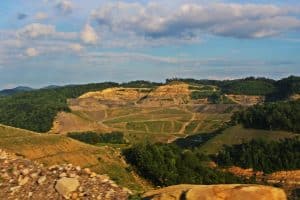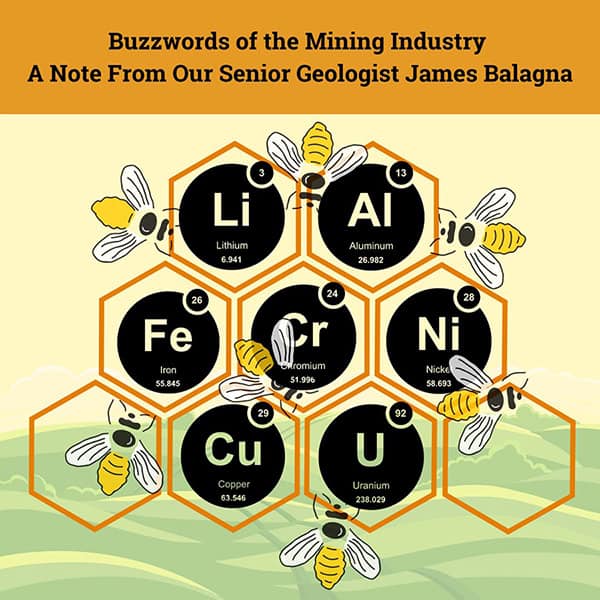6. Zeolites vs. Other Pozzolans: A Comparative Perspective (Focus on Diatomite where data allows)
Natural zeolites are part of a broader family of pozzolanic materials, which includes other natural substances like diatomite, volcanic ashes and tuffs, and trass, as well as artificial (or industrial by-product) pozzolans such as fly ash, silica fume, and metakaolin. Each of these materials possesses unique characteristics that influence its performance in concrete. A direct comparison with diatomite is particularly relevant given the reference to an article on diatomite as a pozzolan. Both zeolite and diatomite are naturally occurring siliceous or aluminosiliceous materials that exhibit pozzolanic activity when finely ground and mixed with cement. Both generally contribute to the improvement of late-age mechanical strength and influence the hydration kinetics of cement. A common characteristic of many natural pozzolans, including both zeolite and diatomite, is their tendency to increase the water demand of concrete mixes due to their inherent porosity and surface area. However, there are notable differences, as highlighted by studies such as one comparing four natural mineral additives:
Composition: Zeolites used in such studies are often predominantly clinoptilolite, an aluminosilicate mineral.20 Diatomite, on the other hand, is a siliceous sedimentary rock primarily composed of amorphous opaline silica (from the fossilized remains of diatoms), though it may also contain crystalline phases like quartz and muscovite.20 The synthesis of zeolite from diatomite is possible, underscoring their fundamental chemical relationship through silica content.44
Specific Surface Area (SSA) and Porosity: Both materials are porous, but their pore structures differ. Zeolites have a crystalline microporous structure, while diatomite’s porosity stems from the intricate, hollow frustules of diatoms. Measured BET SSA can vary; one study reported zeolite (clinoptilolite) at 31.49 m2/g and diatomite at 23.64 m2/g 20, though diatomite is generally known for very high porosity.
Effect on Setting Time: In the comparative study, zeolite tended to reduce the setting time of cement paste, whereas diatomite tended to increase it.
Mechanical Strength Contribution: The same study 20 found that at a 10% replacement level, zeolite-modified mortar exhibited higher 28-day compressive strength compared to diatomite-modified mortar. In an overall ranking of four natural additives (zeolite, diatomite, trass, bentonite) based on their beneficial influence on 28-day mortar strength, zeolite was ranked highest, followed by trass, then diatomite, and lastly bentonite.
Other Physical Differences: General comparisons (though not always in a pozzolanic context) describe diatomite as being softer, more brittle, and lighter in weight, while zeolite is harder and heavier.43 A key distinguishing feature is zeolite’s significantly higher Cation Exchange Capacity (CEC) compared to diatomite, which is primarily siliceous.43
While both materials are effective pozzolans, these differences suggest that zeolites (particularly clinoptilolite-rich varieties) might offer a slight advantage in terms of long-term strength development as observed in some studies. Furthermore, the pronounced ion-exchange capacity of zeolites provides a distinct secondary benefit, particularly in the context of ASR mitigation by sequestering alkali ions, an effect that may not be as significant in diatomite due to its lower aluminosilicate content and CEC.
However, the high amorphous silica content of diatomite can lead to very high pozzolanic reactivity if it is properly processed and its particle characteristics are optimized. The choice between natural pozzolans like zeolite and diatomite is therefore not always straightforward. It depends on factors such as the quality and consistency of local deposits, mining and processing costs, transportation logistics, and the specific performance enhancements desired in the concrete application. A thorough characterization of the specific mineral deposit is crucial for predicting the performance of either material.
Table 3: Comparative Overview: Natural Zeolite vs. Diatomite as Potential Pozzolans (Synthesized from 20 and general knowledge)
Property | Natural Zeolite (e.g., Clinoptilolite) | Diatomite (Natural) |
Primary Composition | Hydrated aluminosilicates of alkali/alkaline earth metals | Amorphous hydrated silica (opal-A) from diatom frustules |
Typical Reactive Components | Reactive SiO2 and Al2O3 in crystalline framework | Amorphous SiO2 |
Specific Surface Area (BET) | Moderate to High (e.g., 15-50+ m2/g) | Variable, can be very high due to frustule structure (e.g., 20-40+ m2/g) |
Porosity | High (microporous crystalline structure) | Very High (intricate diatom frustule porosity) |
Water Demand Impact in Concrete | Generally Increases 20 | Generally Increases 20 |
Effect on Setting Time (Cement) | Tended to Reduce 20 | Tended to Increase 20 |
Relative Pozzolanic Strength (28d) | Ranked higher in one study (10% addition) 20 | Ranked lower than zeolite in one study (10% addition) 20 |
Cation Exchange Capacity (CEC) | Significant (e.g., 1-2.5 meq/g) 13 | Low to Negligible |
Key Advantages for Concrete | Good long-term strength, ASR mitigation via ion exchange, durability | High reactivity (amorphous silica), lightweight potential |
Primary Physical Form | Crystalline mineral aggregates | Friable, chalk-like sedimentary rock |
7. Economic Viability and Market Landscape for Zeolite Pozzolans
The economic feasibility and market adoption of natural zeolites as pozzolans are influenced by a combination of production costs, market demand for SCMs, and the value they add to concrete.
Natural Zeolite Production and Market Size: The global market for zeolites, encompassing both natural and synthetic types, is substantial and projected for steady growth. One market report indicates growth from USD 8.96 billion in 2024 to USD 11.13 billion by 2030, at a Compound Annual Growth Rate (CAGR) of 3.7%.45
Within this, natural zeolites constitute a significant segment, estimated to hold the second-largest market share, driven by their applications in agriculture, water treatment, construction (including pozzolans), and animal feed. Another analysis focused specifically on the natural zeolites market valued it at USD 2,827 million in 2025, with a projected CAGR of 4.9% from 2025 to 2033.21 In the United States, annual production of natural zeolites has been around 86,000 to 87,000 metric tons in recent years, with New Mexico, California, Idaho, Texas, Oregon, and Arizona being the leading producing states. St. Cloud Mining is recognized as a major North American producer with operations across several of these states.
Globally, North America and Asia (particularly China) are dominant forces in natural zeolite production. The demand for natural zeolites is propelled by diverse end-uses, including animal feed, odor control, water purification, soil amendments, and increasingly, as pozzolans in construction.
Factors Influencing Cost and Pricing: The price of natural zeolite products is not uniform and depends on several factors: the purity (percentage of zeolite mineral), the presence and type of accessory minerals, specific chemical and physical properties of the zeolite (e.g., CEC, Si/Al ratio), particle size, the degree of processing (such as grinding, drying, or activation), and the intended end-use application.23 Bulk prices for natural zeolites, FOB mine, were reported in a range of $110 to $950 per metric ton in 2022.23 For example, Bear River Zeolite’s average sales price for clinoptilolite products was approximately $243 per metric ton in 2022.23 Mining and processing (crushing, grinding, screening, drying) represent significant cost components. Transportation costs are also a major consideration, particularly for lower-value, bulk applications like pozzolans, as they can limit the economic radius from the mine to the market.
Economic Benefits of Using Zeolites in Concrete:
The incorporation of natural zeolites as pozzolans in concrete offers several economic advantages:
Reduction in Portland Cement Content: Replacing a portion of Portland cement (typically 10-30%) with less expensive natural zeolite can lead to direct cost savings in concrete production, as cement is usually the most expensive component of the mix. This also translates to a reduction in the embodied energy and CO2 emissions associated with the concrete, which can have indirect economic benefits through carbon taxes or credits.
Enhanced Durability and Service Life: The improvements in concrete durability conferred by zeolites—such as increased resistance to ASR, sulfate attack, and chloride penetration—can lead to a longer service life for concrete structures and reduced maintenance and repair costs over the structure’s lifetime.
Utilization of Abundant Natural Resources: Zeolites are relatively abundant natural minerals, and their utilization as SCMs promotes the efficient use of local resources, potentially reducing reliance on imported cement or other SCMs.
The overall economic viability of natural zeolites as pozzolans is thus a complex equation. It involves balancing the raw material cost (which can be relatively low for unprocessed bulk material), the added costs of processing (grinding to pozzolanic fineness, potential activation or beneficiation), and transportation, against the value they provide through cement replacement, performance enhancement, and long-term durability benefits. This cost-benefit analysis must also consider the prevailing prices of Portland cement and competing SCMs in a given region. Fluctuations in energy prices, which affect cement production costs as well as zeolite processing and transport, and the evolution of carbon pricing mechanisms or incentives for low-carbon construction materials, can significantly influence the economic attractiveness of natural zeolites. As the emphasis on sustainable and low-carbon construction intensifies, the economic case for utilizing materials like natural zeolites is likely to strengthen.
- Challenges and Considerations in Utilizing Natural Zeolites
Despite the promising attributes of natural zeolites as pozzolans, several challenges and considerations must be addressed to facilitate their widespread and effective use in the concrete industry.
Variability of Natural Deposits: This is perhaps the most significant challenge. Natural zeolite deposits are inherently heterogeneous, with variations in mineralogical composition (e.g., type of zeolite, such as clinoptilolite, mordenite, etc.), purity (presence of non-zeolitic minerals like clays, quartz, feldspar), Si/Al ratio, cation exchange capacity, and particle characteristics. This variability can occur not only between different geological sources but also within a single deposit. Such inconsistencies directly impact the pozzolanic reactivity and overall performance of the zeolite in concrete, making it difficult to predict behavior without thorough characterization. Effective utilization, therefore, requires careful geological assessment of deposits, potentially selective mining practices, and rigorous, ongoing quality control measures to ensure a consistent product.
Increased Water Demand and Workability Issues: As discussed earlier, the high porosity and specific surface area of most natural zeolites lead to increased water absorption when mixed into concrete. This typically results in a higher water demand to achieve the desired slump or workability, or necessitates the use of chemical admixtures like superplasticizers. While manageable, this can add to the cost of the concrete mix and, if not properly accounted for, could lead to issues like increased shrinkage or reduced strength due to a higher effective water-binder ratio.
Need for Standardization and Quality Control: Compared to well-established SCMs like fly ash or silica fume, which have more specific ASTM or EN standards guiding their use, natural zeolites (while classifiable under general natural pozzolan categories like ASTM C618 Class N) may lack the detailed, material-specific standards that engineers and specifiers rely on for consistent performance. The development and adoption of robust quality control protocols and potentially more tailored standards for pozzolanic zeolites are crucial for building industry confidence. This lack of specific standards, compounded by natural variability, creates a significant barrier to mainstream adoption.
Processing Requirements: Raw mined zeolite typically requires processing, primarily grinding to a fineness suitable for pozzolanic reaction (e.g., similar to or finer than cement). This comminution step consumes energy and adds to the production cost. Depending on the deposit’s quality, beneficiation processes to remove deleterious impurities or thermal/chemical activation to enhance reactivity might be necessary, further adding to complexity and cost.
Competition from Other SCMs and Materials: Natural zeolites compete in the SCM market with established materials like fly ash, ground granulated blast-furnace slag (GGBFS), silica fume, and other natural pozzolans such as diatomite or volcanic ash. The availability, cost, local regulations, and proven performance track record of these alternatives influence the adoption rate of zeolites. Furthermore, zeolites have diverse applications outside of construction (e.g., agriculture, water treatment, animal feed), and demand from these sectors can affect overall production economics and availability for use as pozzolans.
Limited Awareness, Acceptance, and Skilled Professionals: There can be a lack of widespread awareness and confidence within the construction industry regarding the benefits, proper application, and long-term performance of natural pozzolans, including zeolites. A shortage of professionals adequately skilled in designing and implementing concrete mixes with these materials can also hinder adoption.
Potential for Unreacted Material: Especially at higher replacement levels, a portion of the zeolite may remain unreacted in the concrete matrix. While this might contribute to filler effects, it represents an inefficient use of the pozzolanic potential and could, in some cases, lead to an increase in fine porosity if these unreacted particles are themselves porous.
Environmental Impact of Sourcing and Processing: While the use of zeolites as a cement replacement contributes to making concrete “greener” by reducing clinker content, the extraction (mining) and processing (grinding, transport, potential activation) of zeolites themselves have an associated environmental footprint (energy consumption, land use, emissions).37 A comprehensive life-cycle assessment (LCA) is necessary to fully understand the net environmental benefit. This presents a nuanced perspective: while “natural” is appealing for sustainability, realizing this potential often requires “industrial” interventions for characterization, processing, and quality control, which carry their own environmental and economic costs.
Addressing these challenges through continued research, technological advancements in processing and characterization, development of industry standards, and education will be key to unlocking the full potential of natural zeolites as a mainstream SCM.
- The Future of Zeolites in Sustainable Construction
The trajectory for natural zeolites in the construction sector appears promising, largely driven by the overarching global push towards sustainability and carbon footprint reduction in building materials.
Growing Demand for Green Building Materials and CO2 Reduction: The primary impetus for exploring and utilizing zeolites is the urgent need to decrease the significant CO2 emissions associated with Portland cement manufacturing.1 As SCMs, zeolites directly contribute to this goal by enabling a reduction in the clinker factor of cement. The increasing global emphasis on sustainable construction practices, green building certifications, and policies favoring low-carbon materials will continue to fuel demand for effective pozzolans like zeolites.
Potential for Advanced Applications and Material Enhancement:
Modified Zeolites: Research into modifying natural zeolites through thermal treatment (calcination) or chemical activation is ongoing. Such modifications can enhance their pozzolanic reactivity, improve their ion-exchange capabilities for targeted pollutant capture (e.g., heavy metals from waste streams incorporated into concrete), or boost their effectiveness in controlling deleterious reactions like ASR.
Role in Carbon Capture, Utilization, and Storage (CCUS) within Concrete: The inherent microporous structure and adsorption capabilities of zeolites offer intriguing possibilities for direct air capture of CO2 or for facilitating CO2 mineralization reactions within the concrete matrix itself. While still an emerging area, some studies hint at the potential for zeolites to capture greenhouse gases or be used in innovative carbonation techniques.
Nano-Zeolites: The application of nanotechnology to zeolites, creating nano-sized particles, could open doors to advanced composite materials with tailored properties, potentially offering superior reactivity and microstructural refinement.
Integration with Artificial Intelligence (AI) for Optimized Green Construction: AI and machine learning algorithms can play a vital role in optimizing the use of zeolites. This includes designing complex concrete mixes incorporating zeolites and other SCMs, predicting long-term performance based on material characteristics, and developing strategies for creating energy-efficient and climate-adaptive building components.
Alignment with Circular Economy Principles: The use of zeolites aligns well with the principles of a circular economy by promoting the efficient utilization of abundant natural resources. Furthermore, research into the recycling and repurposing of zeolite-containing construction materials or zeolites from other end-of-life applications could further enhance their sustainability profile.
Ongoing Research and Development for SCMs: The field of SCMs is dynamic, with continuous research focused on discovering new sources, improving the performance of existing ones, and understanding their complex interactions within cementitious systems. Future research will likely focus on maximizing the synergistic benefits of zeolites when used in combination with other SCMs or fibers, developing methods to consistently address their natural variability, and devising strategies to mitigate challenges like increased water demand. Innovations in concrete technology and material science are identified as major trends shaping the future of SCMs.
The future of zeolites in construction may not solely be as a standalone SCM replacement for cement. Instead, their greatest potential might be realized through synergistic combinations with other advanced materials (e.g., other pozzolans, industrial by-products, reinforcing fibers) and enabling technologies (such as chemical modification techniques or AI-driven design and quality control). Such integrated approaches could lead to the development of high-performance, multi-functional, and truly sustainable cementitious composites, tailored for specific applications and environmental conditions. To achieve this, a multi-disciplinary effort involving geology, materials science, chemistry, data science, and civil engineering will be crucial to innovate across the entire value chain, from resource assessment and processing to application and end-of-life considerations.




